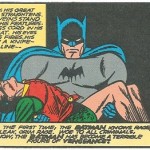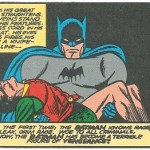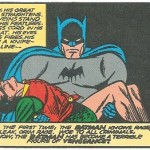While I liked Waltz with Bashir, the movie was better. Perhaps this comes from the fact that I watched the movie before approaching the graphic novel, or watched the movie a second time as part of a film class (Terrorism, Conflict, and Resistance), which helped me gain a better understanding of the circumstances surrounding the massacres at Shabra and Shatila. Either way, I felt the graphic novel was just an attempt to re-create– word-for-word, scene-for-scene–the movie. This isn’t necessarily a bad thing, and I appreciated the muted tones and harrowing message of the graphic novel. It just couldn’t quite succeed in creating a haunted feel the way the movie does. There are two specific reasons why I feel the movie does more to Folman’s story than the graphic novel: music, and disjointed, moving images. One of Folman’s only memories of the war places him in the ocean as flares light up the sky over the Shabra and Shatila camps in Lebanon (11–13). He walks away from the sea and sees crowds of people swarming past him. In the graphic novel, these are powerful images, but contrast them with these:
Something about the way the camera shifts around him as the slow, sublime music plays in the background makes the scene even more haunting. The camera shifts and stuttering crowds create an effect that just can’t be gained with pictures alone. Perhaps more moment-to-moment shifts in the graphic novel would have better conveyed what exactly is happening and the tragedy it signifies, but reading the graphic novel, I just never felt tragedy the way the movie does. It just all goes by too quickly.
At other times in the movie, Folman glorifies war in stark contrast to the overall message of both the graphic novel and movie. For example, the scene that takes place on the beach with people surfing, smoking and drinking (before most of the men have seen real combat or witnessed a massacre) (46–47), does little justice to the movie’s Apocalypse-Now-like scene with a punk song playing over glorified war images:
Scenes like this don’t exist in the graphic novel at all. We are merely provided the memories of people who were there and the tale of a person trying to understand his part in the conflict. In a story about a massacre told by the son of people who were in Auschwitz during one of the biggest massacres in history, these scenes help provide an important, satirical viewpoint of war, unintended casualties and the real price paid, especially later, when the Phalangists knowingly and purposefully kill thousands of Palestinian refugees for revenge. I felt that the lack of glorified war scenes (or the inability to pull them off in a novel form) took away an important juxtaposition in the film and because there’s no music (you have to admit, that song is catchy), the graphic novel loses a big emotional element.
Since the pictures and dialogue in the graphic novel follow the film almost exactly, I feel like I’m left with a lesser text. I’ve often heard some people say “why read a book when you can watch the movie?” Of course, as English majors, we all know the books are better in 99.9% of cases. But what happens when the book comes after the award-winning movie? Well, why read the book, when you can watch the movie?
I’ll leave you with two additional clips from the movie (the waltz and the rocket scene) that the graphic novel tries to recreate, and comes close, but just quite can’t capture the effect I felt when I watched the pictures move to a stunning score juxtaposed with interviews in a way that makes for a more complete text in my opinion.
Look at the struggle for the gun. Listen to the music. It’s an amazing scene that the graphic novel just can’t recreate. And it also does a great job of overlaying interviews with the historical “footage” that is important to Folman’s story as someone trying to piece together the massacre he was a part of, but can’t remember.
Jump to about 2:45 and watch the way the rocket tracks slowly through the woods before they kill a kid. It’s amazing filmmaking.
Maybe I’m just being grumpy because I expected more from the graphic novel. I enjoyed reading it, but it felt like a lesser experience. For anyone who liked the graphic novel, I recommend checking out the movie, which you should be able to watch on YouTube.


